Hypoallergenic Cats Guide: 7 Breeds That Won't Trigger Your Allergies

Do you love felines but suffer from allergies? You're not alone. Millions of people experience allergic reactions to their furry friends but still dream of having a companion. The good news is that certain hypoallergenic cat breeds could be your solution to enjoying the companionship of a pet without the constant sneezing, itchy eyes, and respiratory discomfort.
In this comprehensive guide, we'll explore seven special breeds that produce fewer allergens than typical felines, making them more suitable for people with sensitivities. While no breed is completely allergy-free, these special companions might allow allergy sufferers to finally experience the joy of pet ownership without the usual uncomfortable symptoms.
What Makes a Breed Hypoallergenic?
Before diving into specific breeds, it's important to understand what makes certain felines hypoallergenic and why some are less likely to trigger allergic reactions than others.
What Causes Allergies in Pet Owners?
Contrary to popular belief, allergies to felines aren't primarily caused by fur or hair. The main culprit is a protein called Fel d 1, which is found in saliva, skin cells (dander), and urine. When animals groom themselves, they spread this protein onto their fur, which then sheds into the environment. As the particles become airborne, they can be inhaled by humans, triggering allergic reactions in sensitive individuals.
Breeds with lower allergen production release less of the Fel d 1 protein than others, which means they're less likely to cause allergic reactions. Some naturally produce lower levels of this allergenic protein, while others might shed less fur or require less grooming, which reduces the spread of allergens throughout your home.

Why No Breed is Completely Allergy-Free
It's crucial to understand that even with special low-allergen breeds, no animal is 100% allergy-free. The term "hypoallergenic" can be somewhat misleading – these companions simply produce fewer allergens or shed less, but they still produce some level of the Fel d 1 protein.
Individual reactions can vary significantly. Some allergy sufferers might experience no symptoms with certain breeds, while others might still have mild reactions. Your personal sensitivity level, the specific animal, and your home environment all play roles in determining how you'll react to a low-allergen pet.
The 7 Best Hypoallergenic Cat Breeds
Now that you understand what makes a breed better for allergies, let's explore seven wonderful options that are known for being more suitable for allergy sufferers.
1. Siberian
The Siberian may seem like an unlikely candidate for a low-allergen breed due to its luxurious, thick coat, but these beautiful forest animals from Russia naturally produce less Fel d 1 protein than many other varieties. This makes them one of the most truly hypoallergenic options available.
These gentle giants are known for their friendly, affectionate nature and their playful, intelligent personalities. They're medium to large-sized with strong bodies, tufted ears, and magnificent triple-layered coats that keep them warm in cold climates. Despite their abundant fur, many allergy sufferers report fewer reactions to Siberians.
What makes them special is a genetic trait that results in their producing approximately 20% less of the allergenic protein than average. For many allergy sufferers, this reduction is enough to prevent typical allergic reactions, allowing them to enjoy the companionship of these gorgeous felines.
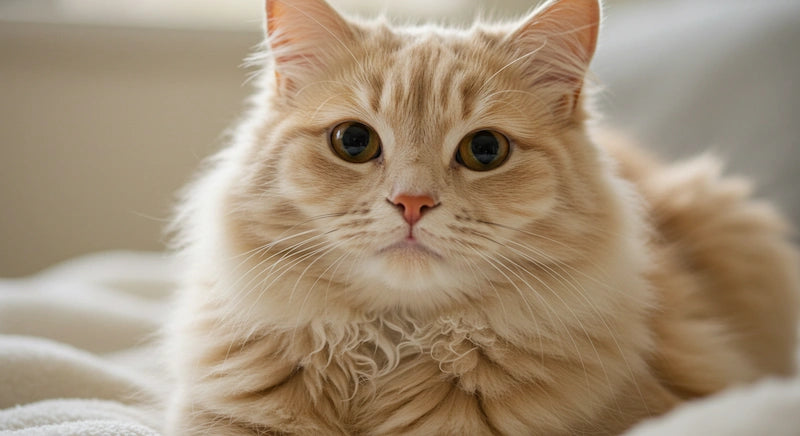
2. Balinese
Often called "the long-haired Siamese," the Balinese combines the sleek, elegant look and vocal personality of the Siamese with a medium-length silky coat. Despite having longer fur, they are considered ideal for allergy sufferers because they produce less of the Fel d 1 protein.
These intelligent, social companions form strong bonds with their humans and are known for their playful, interactive personalities. The Balinese has a single-layer coat that produces less dander than many other breeds, and they shed less than you might expect from a medium-haired pet.
Their fine, silky coat doesn't mat easily, which means less grooming and therefore less saliva spread onto the fur. This combination of factors makes the Balinese an excellent choice for allergy sufferers who desire an affectionate, communicative companion.
3. Russian Blue
The Russian Blue is widely regarded as one of the best low-allergen cats, with its short, dense double coat that sheds minimally. Their plush, bluish-gray fur has a distinctive silvery sheen that not only looks beautiful but also traps dander close to their skin rather than releasing it into the environment.
Russian Blues are gentle, somewhat shy pets known for their intelligence and loyal nature. They tend to bond closely with their families but may be reserved around strangers. Their quiet demeanor and moderate activity level make them ideal for calm households.
What makes Russian Blues particularly suitable for allergy sufferers is that they produce less Fel d 1 protein and shed less frequently than many other breeds. Their dense coat requires minimal grooming, which means less saliva on the fur and fewer allergens in your home.
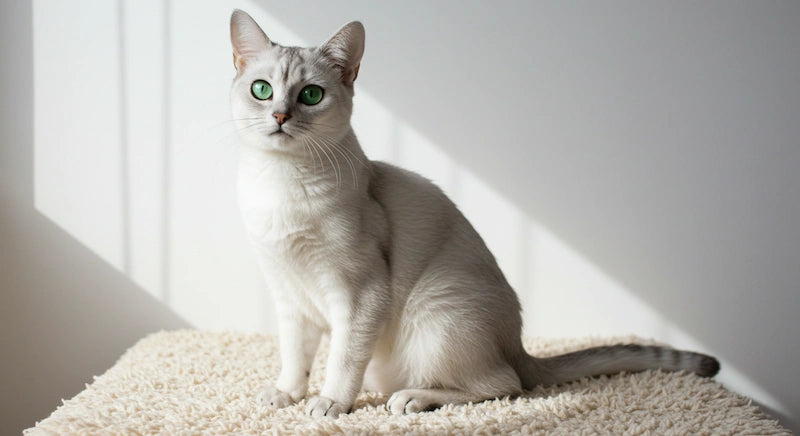
4. Sphynx
The Sphynx is perhaps the most recognizable allergy-friendly breed due to its lack of fur. While they're not completely hairless (they have a fine peach-like fuzz), their minimal coat dramatically reduces the amount of allergen-carrying hair in the environment.
These companions are known for their extroverted, affectionate, and often comedic personalities. Sphynx are extremely social and love to be the center of attention. They're intelligent, energetic, and form strong bonds with their human families.
It's important to note that while the Sphynx doesn't have fur to trap and spread allergens, they still produce the Fel d 1 protein in their saliva and skin oils. However, without fur to trap and distribute these allergens, many allergy sufferers find they can tolerate this breed well. They require regular bathing to manage the oils on their skin, which helps further reduce allergen levels.
5. Devon Rex
The Devon Rex is known for its elfin appearance, large ears, and wavy, suede-like coat. These playful, mischievous companions have a very short, fine coat with a distinctive curl pattern that sheds minimally, making them an excellent hypoallergenic option.
Devon Rex pets are extremely people-oriented and love to be involved in everything their humans do. They're often described as having dog-like personalities, following their owners around and even learning tricks. Their playful nature continues well into adulthood, making them entertaining companions.
The Devon Rex's curly coat is caused by a genetic mutation that results in less fur and reduced shedding. With less hair to carry allergens and less shedding to distribute them around your home, these pets often cause fewer allergic reactions. Their minimal grooming needs also mean less saliva on their fur.
6. Cornish Rex
Similar to the Devon Rex but with a different genetic mutation, the Cornish Rex has an unusual, wavelike coat pattern with no guard hairs. Their soft, downy undercoat feels like velvet or suede and sheds very little, helping to keep allergens at bay.
Cornish Rex companions are known for their high energy levels, playful antics, and affectionate nature. They remain kitten-like well into adulthood and love interactive play with their humans. These intelligent animals are often described as mischievous and can be quite vocal.
The minimal shedding of the Cornish Rex means fewer allergens spread throughout your home. Though they still produce allergenic proteins, the reduced amount of hair to carry these proteins makes them a good choice for many allergy sufferers. Their short coats require minimal grooming, further reducing the spread of allergens.
7. Bengal
With their stunning spotted or marbled coats reminiscent of their wild ancestors, Bengals bring exotic beauty to the hypoallergenic category. Their short, fine pelts require minimal grooming and shed less than many other breeds.
Bengals are extremely active, athletic pets that need plenty of stimulation and play. They're intelligent and curious, often learning to open doors and cabinets. These animals form strong bonds with their families and are known for their vocal nature and distinctive "chirping" sounds.
What makes Bengals suitable for some allergy sufferers is their fine, close-lying coat that sheds minimally and requires less grooming than many other breeds. Less grooming means less saliva on the fur, which can mean fewer allergens. However, individual reactions can vary, so spending time with a Bengal before adoption is recommended.
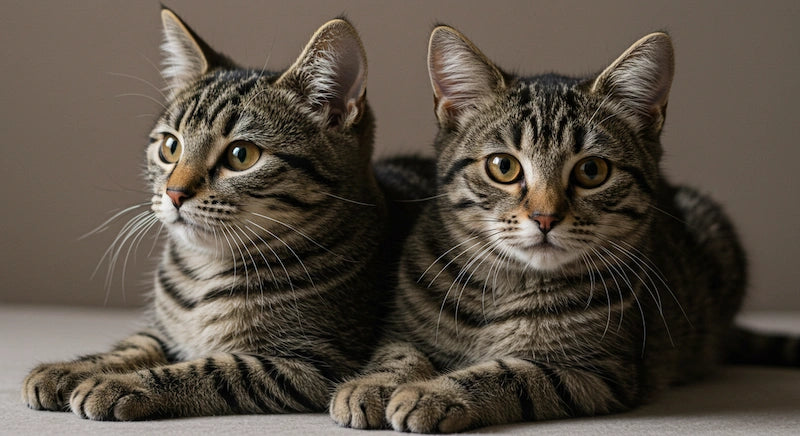
Caring for Your Hypoallergenic Friend
Even with special low-allergen breeds, proper care and cleaning routines can help minimize allergen levels in your home and reduce the chance of allergic reactions.
Regular Grooming and Bathing
Regular grooming is essential for managing allergens with any pet, including special breeds. Brushing your companion frequently helps remove loose hair and dander before it can spread around your home. Ideally, this should be done by someone without allergies, or the allergic person should wear a mask during grooming sessions.
For pets that tolerate it, occasional bathing can significantly reduce allergen levels on the fur. Special wipes designed to reduce dander are also available and can be used between baths. For hairless breeds like the Sphynx, weekly bathing is necessary to remove skin oils that can carry allergens.
The grooming needs for each hypoallergenic cat breed vary:
-
Siberian and Balinese require regular brushing (2-3 times weekly) to prevent matting and reduce shedding
-
Russian Blues and Bengals need weekly brushing to remove loose hair
-
Devon and Cornish Rex require minimal grooming but benefit from occasional wiping with a damp cloth
-
Sphynx need weekly bathing to remove oils from their skin
Keeping Your Home Clean
Creating an allergen-reduced environment is crucial when living with any pet, even those that produce fewer allergens. Implementing a thorough cleaning routine can significantly reduce your exposure to allergens:
-
Use a vacuum cleaner with a HEPA filter to trap small particles that regular vacuums might recirculate
-
Wash your pet's bedding weekly in hot water
-
Consider using washable slipcovers on furniture where your companion likes to rest
-
Install HEPA air purifiers in main living areas and bedrooms
-
Replace carpeting with hard flooring when possible, as carpet traps allergens
-
Dust frequently with a damp cloth to capture allergens rather than dispersing them
Allergy Management Tips for Pet Owners
Beyond keeping your companion and home clean, there are additional strategies that can help allergy sufferers live comfortably with a low-allergen pet:
Designate certain areas of your home, particularly your bedroom, as pet-free zones to create allergen-free spaces where you can get relief. Consistent hand washing after handling your companion can prevent transferring allergens to your face and eyes. Consider using allergy medications as recommended by your doctor to manage symptoms.
Some allergy sufferers benefit from immunotherapy (allergy shots) that can reduce sensitivity to allergens over time. Consulting with an allergist before adopting a pet can help you develop a personalized strategy for managing your specific allergy symptoms.
Considerations Before Adopting a Hypoallergenic Breed
Before bringing home a feline friend that produces fewer allergens, there are several important factors to consider that will help ensure a successful match for both you and your new companion.
Individual Sensitivity Levels
Remember that these special breeds aren't completely non-allergenic. Your personal sensitivity level plays a significant role in determining whether a particular breed will work for you. If possible, spend time with the specific breed or even the specific animal you're considering adopting to gauge your reaction before making a commitment.
Cost and Care Requirements
Hypoallergenic cat breeds often come with higher adoption or purchase costs than non-pedigreed alternatives. Purebred varieties from reputable breeders can cost anywhere from $500 to $2,000 or more, depending on the breed and lineage.
Additionally, some special breeds require special care routines. Sphynx need regular bathing, while long-haired breeds like the Siberian and Balinese require consistent grooming to prevent matting and reduce allergen spread. Consider whether you have the time and resources for these additional care requirements.
Temperament and Lifestyle Compatibility
Each breed has a distinct personality and energy level. Active breeds like the Bengal and Cornish Rex need plenty of play and stimulation, while others like the Russian Blue prefer quieter environments. Consider your lifestyle and what kind of personality would fit best with your household.
Conclusion: Finding Your Perfect Hypoallergenic Companion
For allergy sufferers who dream of sharing their lives with a feline friend, hypoallergenic cat breeds offer real hope. While no breed is completely allergy-free, these seven options—Siberian, Balinese, Russian Blue, Sphynx, Devon Rex, Cornish Rex, and Bengal—produce fewer allergens or distribute them less widely, making them more suitable companions for people with sensitivities.
The key to success lies in understanding your own allergy triggers, researching breeds thoroughly, spending time with potential pets before adoption, and implementing proper cleaning and grooming routines. With the right preparation and care, many allergy sufferers can enjoy the companionship of these special animals without sacrificing their comfort and health.
Are you ready to adopt a hypoallergenic companion? Browse our selection of these allergy-friendly breeds and find the perfect feline friend for your home today!



























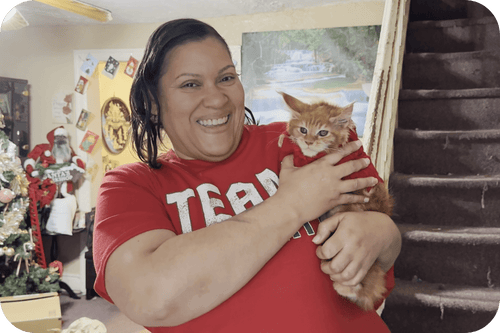












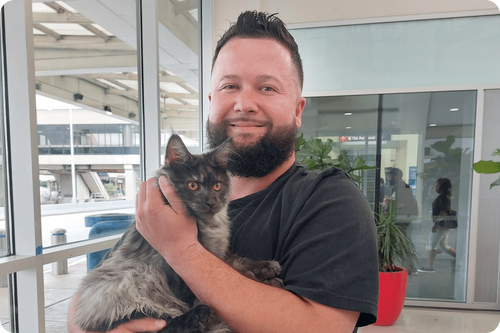











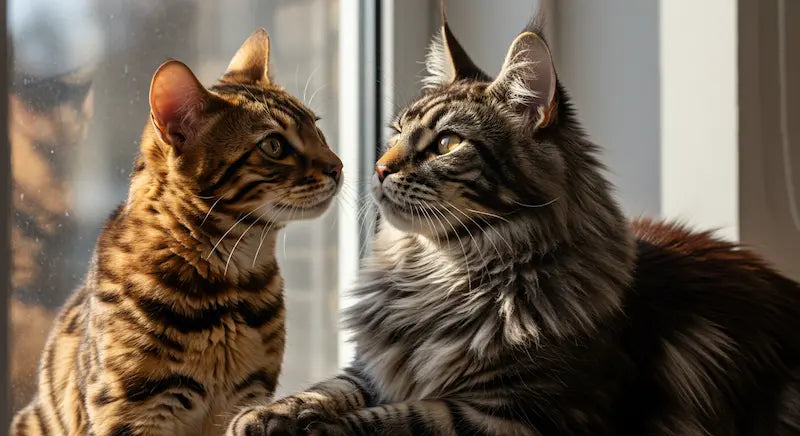








Comments(0)